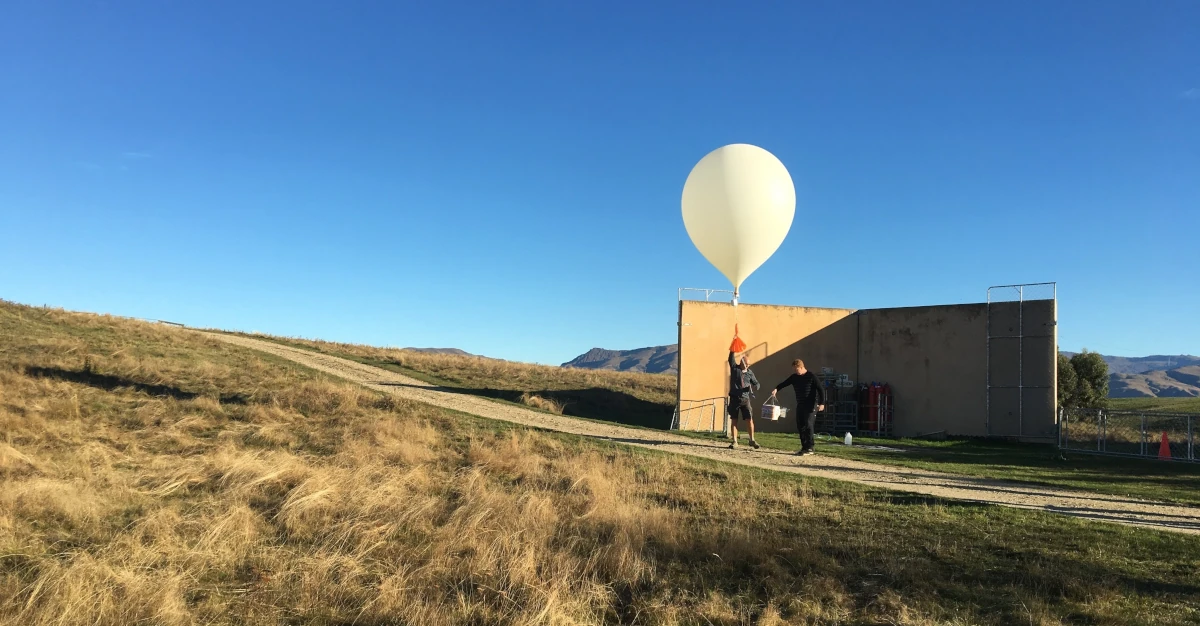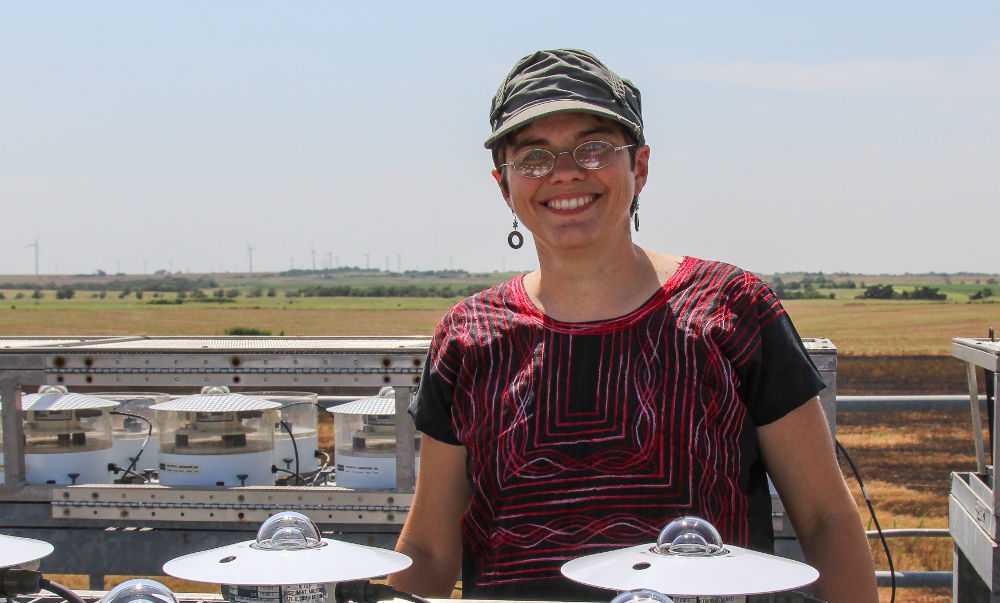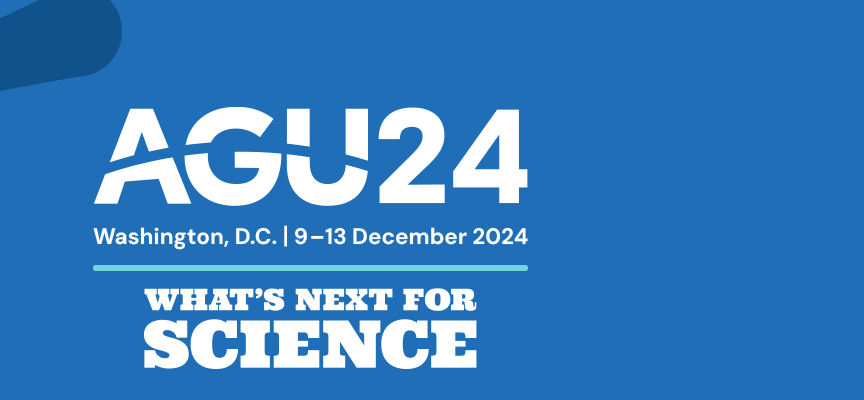News

April 2, 2025
Photo feature: Last light at South Pole brings 6 months of darkness
In the Northern Hemisphere, March 20 signals the start of spring. It's the start of fall in the Southern Hemisphere, where researchers and staff at NOAA’s South Pole Observatory recently witnessed the fading light of the sun and the start of six months of darkness.February 27, 2025
GML’s 20-year water vapor record at Lauder, New Zealand
The NOAA Global Monitoring Laboratory has reached a milestone: the longest continuous upper atmospheric water vapor record in the southern hemisphere.January 16, 2025
Biden-Harris Administration, NOAA invest $15 million to help protect Western U.S. communities from wildfire
The Department of Commerce and NOAA announced today that approximately $15 million has been provided through the Bipartisan Infrastructure Law to construct and deploy a new suite of fire weather observing systems in high-risk locations in the Western United States to support wildfire prediction, detection and monitoring.January 6, 2025
GML highlights at the 2025 AMS annual meeting
GML and CIRES researchers and summer interns are presenting several talks and posters, and collaborating on others, at the 2025 annual meeting of the American Meteorological Society. The meeting runs from January 12 – 16 in New Orleans.January 6, 2025
Wildfires accompanied past periods of abrupt climate change
During the last glacial period, when large swaths of the North American continent were covered in ice, rapid, repeating shifts in temperature and tropical rainfall continually altered environments around the world. A new study led by a CIRES/GML researcher finds past wildfire activity tracked the abrupt changes in climate — burning increased when rainfall decreased.December 19, 2024
A year of science and innovation: Reflections from 2024 on building a safer and more resilient nation
Changes in our weather, air quality, ocean, and Great Lakes continue to affect almost every aspect of society. Throughout 2024, NOAA Research has continued to study the Earth to better understand the challenges Americans are facing. Learn about how NOAA Research scientists are working to protect economic prosperity, national security, human and environmental health through our science and innovations.December 10, 2024
GML’s Laura Riihimaki Appointed Project Manager of the Baseline Surface Radiation Network
Laura Riihimaki, a scientist in NOAA’s Global Monitoring Laboratory, has been appointed as Project Manager of the Baseline Surface Radiation Network (BSRN), leading international efforts to make long-term, high-quality surface radiation budget measurements.December 4, 2024
GML highlights at AGU 2024 Fall Meeting
GML and CIRES researchers are presenting several talks and posters at the 2024 Fall Meeting of the American Geophysical Union and collaborating on many more.December 2, 2024
NOAA’s GOES Satellites Can Provide Quicker Detection of Large Methane Emissions
Innovative use of NOAA’s geostationary satellites (GOES) has given scientists a new way to detect large methane emissions faster and more accurately. NOAA scientists say the experimental verification of GOES methane data will lead to faster, more complete data on the location—and amount—of methane emissions and successful mitigation efforts, when there are accidental leaks.November 13, 2024
No sign of fossil fuel pollution peak as the world falls further behind climate targets
Emissions of carbon caused by fossil fuel pollution continued to grow slightly in 2023 to 36.8 billion metric tons of carbon dioxide, setting yet another new record despite increasingly urgent warnings from scientists about the need for steep and immediate decreases. NOAA provides about a quarter of all the atmospheric CO2 observations and about half of all the surface ocean CO2 observations used in the analysis.November 4, 2024
NOAA experts on the ground at COP29, U.N.'s annual summit to advance global action on the climate crisis
NOAA leaders and climate experts will participate as part of the U.S. delegation to the 29th United Nations Conference of the Parties (COP29) being held in Baku, Azerbaijan, from November 11-22. Annual U.N. COP climate summits bring nations together to discuss the intersection of climate science and international policymaking.October 30, 2024
2024 Antarctic ozone hole ranks 7th-smallest since recovery began
Healing continues in the atmosphere over the Antarctic: A hole that opens annually in the ozone layer over Earth's southern pole was relatively small in 2024 compared to other years. NOAA and NASA scientists project the ozone layer could fully recover by 2066.October 21, 2024
Microbes, not fossil fuels, drove methane growth between 2020–22
Microbes in the environment, not fossil fuels, have been driving the recent surge in methane emissions globally, according to a new, detailed analysis published Oct 21 in the Proceedings of the National Academy of Sciences by CU Boulder researchers and collaborators.October 1, 2024
Photo feature: ‘The sun is finally back' at the South Pole
On September 20, after six months of darkness, the return of the sun at the South Pole signaled the arrival of spring in the Southern Hemisphere. For scientists at NOAA’s South Pole Atmospheric Baseline Observatory (SPO), located at the Amundsen-Scott South Pole Research Station, that’s a welcome sight.July 23, 2024
NOAA and United Airlines partner to measure greenhouse gases, pollutants with high-tech flight instruments
NOAA and United Airlines have announced an agreement to equip a Boeing 737 with a sophisticated instrument package that will measure greenhouse gases and other pollutants during domestic flights. It’s a first step in establishing a partnership that could significantly improve monitoring of carbon dioxide, methane and other greenhouse gases, as well as improving the accuracy of weather forecasts in the United States.













